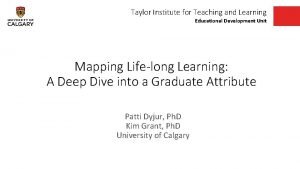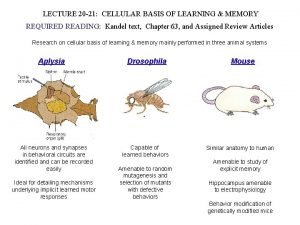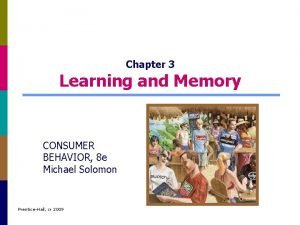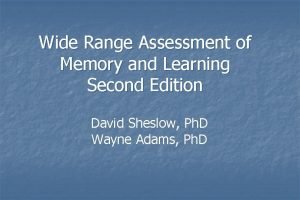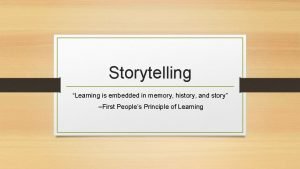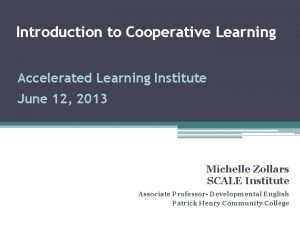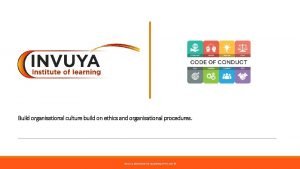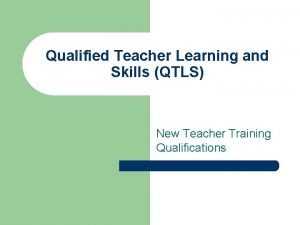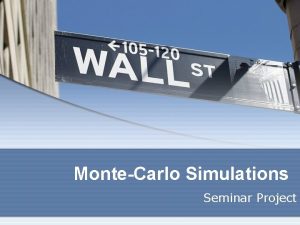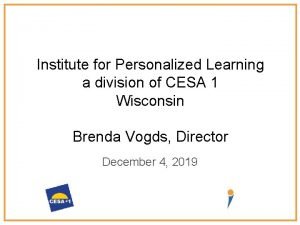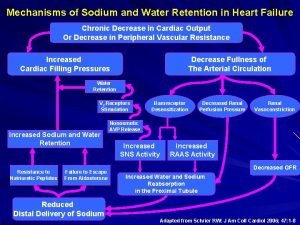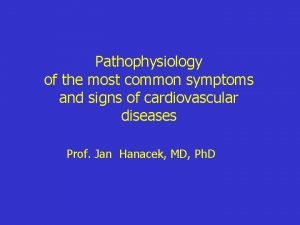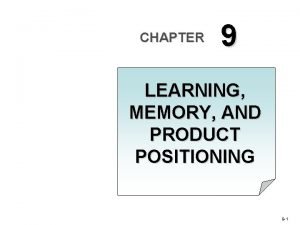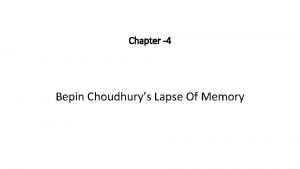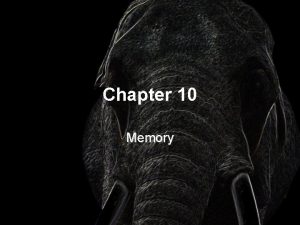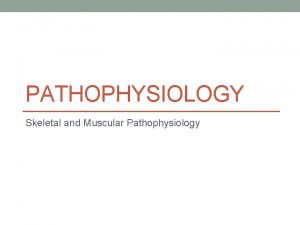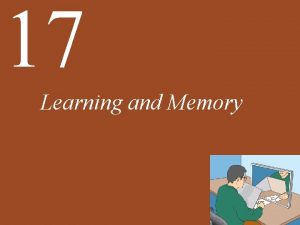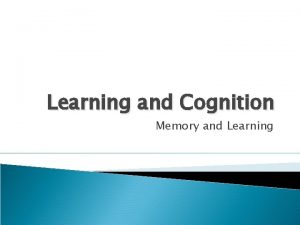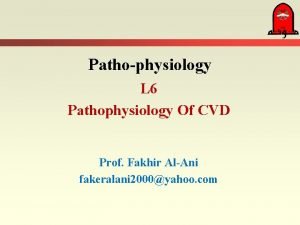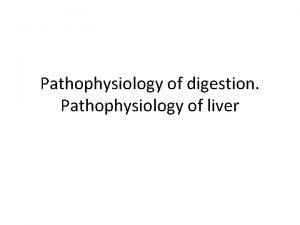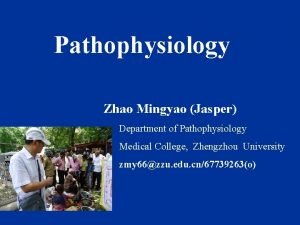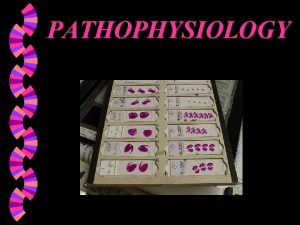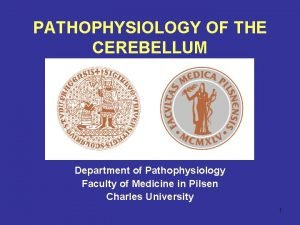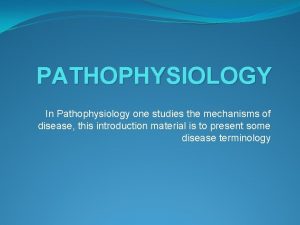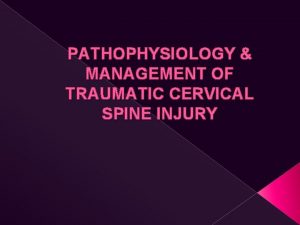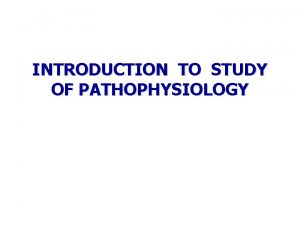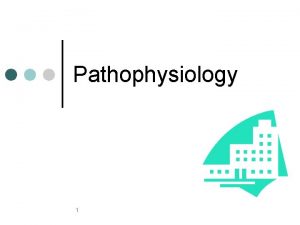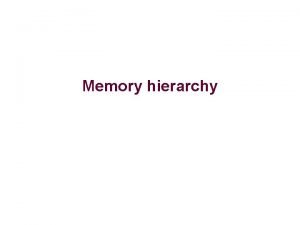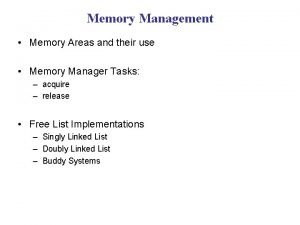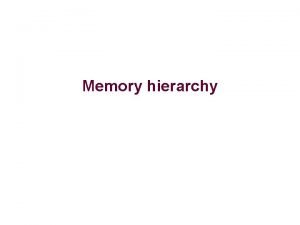PATHOPHYSIOLOGY OF LEARNING AND MEMORY Institute of Pathophysiology



























- Slides: 27

PATHOPHYSIOLOGY OF LEARNING AND MEMORY Institute of Pathophysiology Faculty of Medicine in Pilsen Charles University 1

Learning = a change of behaviour based on previous experience, an entry to memory Memory = storage of information for further utilization 2

Process of memory 1) 2) 3) 4) creation of the memory trace consolidation of the memory trace retention evocation - evocation based on stimuli (reminder) - recall - recognition trace creation trace consolidation retention evocation forgetting „warming“ of the trace: extends retention, decreases probability of forgetting new exposition to the stimulus or evocation trace reconsolidation retention Processes of trace consolidation and reconsolidation are sensitive to disruptive effects. brain commotion, electroshock, hypoglycaemia, hypothermia, intoxication (alcohol) In the phase of retention the memory trace is more stable. amnesia 3

Non-associative learning = no association of two or more stimuli, only reactivity to one stimulus changes 1) habituation 2) sensitization Associative learning = association of two or more stimuli acting in narrow time relation 1) 2) 3) 4) 5) 6) classical conditioning operant conditioning game emulation insight imprinting 4

Classification of memory according to persistance 1) short-term -seconds - minutes -restricted capacity, older information are overlapped with new one -information is then shifted into medium-term memory or forgotten 2) medium-term -minutes - hours -important information shifted into long-term memory, other forgotten 3) long-term -hours, days, years, permanently Working memory – information is stored until it is used, then it is forgotten, belongs to medium-term memory 5

Declarative memory - information can be expressed verbally or as visual image - evocation is wilful 1) semantic – abstract information 2) episodic - events (3) recognition – recognition of objects) Non-declarative memory - information can not be expressed verbally - evocation is unaware 1) motor patterns 2) conditioned reflexes 3) perceptive a cognitive patterns 6

Structures involved in processes of learning and memory 1) Hippocampus - necessary for declarative memory 2) - emotional component and motivation in the learning process 3) Associative cortical areas 4) Septum 5) Corpus amygdaloideum - emotional memory 6) Entorhinal cortex 7) Cerebellum- motor learning, role in other types of learning 8) Striatum - motor learning Injury and changes of these regions -structural, metabolic, changes of neuromediator systems (namely acetylcholine, glutamate, dopamine, noradrenalin) → Learning and memory defects Learning and memory can be also influenced by changes of attention, motivation and emotions, sensory systems. 7 Learned behaviour depends also function of motor system.

HIPPOCAMPUS mouse hippocampus 8

Histological structure of the hippocampus Mouse hippocampus Nissl staining 9

NOS activity in the hippocampus NADPH-diaphorase 10

MEMORY DISORDERS • Amnesia = complete loss of memory - retrograde = loss of information acquired before the genesis of the amnesia - anterograde = defect of storing new information • Hypomnesia = decrease of memory capacity • Hypermnesia = excessive and inadequate remembering of some facts • Paramnesia = distortion of stored information, the patient is confident that it is correct • Memory delusion = conviction about reality of an event, which did not happen, a kind of paramnesia • Ekmnesia = inaccurate time localisation of an event (which is memorized correctly) 11

DISORDERS OF MIND AND INTELLIGENCE • Dementia – acquired disorder of cognitive functions, including memory - Alzheimer‘s disease, vascular dementia, alcoholic dementia Pick‘s disease, Parkinson‘s disease, Huntington‘s chorea, infections, brain tumours, hydrocephalus, brain trauma, endocrinopathy X temporary (reversible) disorders of cognitive functions (e. g. circulatory decompensation, dehydratation, hypothyroidism) • Mental retardation – developmental disorder of cognitive functions - slight – independence, possibility of simple job - middle – partial independence - severe – limited self-service, speech limited to single words - deep – inability of self-service, inability to speak 12

1. SPATIAL LEARNING Methods of spatial navigation: • Allothesis - navigation according to landmarks - vision, olfaction, hearing, touch • Idiothesis - current position linked to starting point of the movement - proprioception, vestibulum - casual correction with allothesis is necessary Spatial memory is deteriorated soon in dementias. → Spatial orientation and memory tests are used for early detection of Alzheimer‘s disease Experimental methods of spatial learning investigation: • Morris water maze • radial maze • Y-maze • T-maze • open field with avoidance of certain area (possibility of circular arena rotation) 13

TYPES OF MAZES Y-maze T-maze radial maze Morris water maze 14

Morris water maze 15

Typical trajectories in the Morris water maze untrained wild type mouse untrained Lurcher mutant mouse wild type mouse after 5 days of training Lurcher mutant mouse after 5 days of training 16

LEARNING CURVE latencies (s) Development of latencies in the Morris water maze during repetitive trial in normal mice (wild type = WT) and mice with a cognitive deficit (Lurcher mutant mice = Lc): 17

2. CLASSICAL CONDITIONING Model experiment: - conditioning of corneal reflex (eye blink conditioning) Unconditioned stimulus: electrical impulse to orbital area, air puff Conditioned stimulus: sound, weak electrical impulse to orbital area 18

19

Reflex circuit of corneal reflex: - nerve endings of the n. trigeminus (n. V. ) in cornea and orbital area – n. V. – nuclei of the n. V. and n. facialis (n. VII. ) – n. VII. – musculus orbicularis oculi Structure of reflex response to irritation of the m. orbicularis oculi: - EMG of the m. orbicularis oculi electrical stimulus S R 1 R 2 S = synaptic response latency of 4 ms - evoked directly by irritation of the n. facialis or muscle R 1 = the 1 st reflex response latency of 8 ms - reaction to irritation of ending of the n. trigeminus R 2 = the 2 nd reflexí response latency of 20 ms - in the reflex circuit are inserted interneurons → longer 20 latency

EMG of the m. orbicularis oculi – reaction to electrical stimulus NP CS CS = conditioned stimulus US = unconditioned stimulus 21

Examples of EMG records of the m. orbicularis oculi during classical conditioning of the eyelid response: untrained individual unusable record 22

Evaluation of classical conditioning test A couple of stimuli is applied several times a day for several consecutive days. An indicator of learning ability is relative incidence of trials, in which conditioned response occurred, in individual days of the experiment or increase of reaction intensity expressed as area under the curve of absolute value of the EMG record in the interval since 50 ms after conditioned stimulus application until the unconditioned stimulus. Learning curve: E 1 -4 = extinction – applied only the conditioned stimulus, the reflex extinct day 23

3. AVOIDANCE - active – the individual learns to do something to avoid an unpleasant stimulus - passive – the individual learns to avoid some area or activity, which is followed by an unpleasant stimulus Examples of passive avoidance: „step through“ „step down“ 24

ACTIVE AVOIDANCE - painful stimulus: electrical current in the metal floor - conditioned stimulus: light – precedes to the painful stimulus Escape reaction = switching off electrical current after beginning of the painful stimulation Avoidance reaction = switching off electrical current before beginning of the painful stimulation (in the interval between switching light on and switching current on) by pulling the lever Indicator of learning ability in the number of trial repetition necessary for creation of avoidance reaction. 25

Active avoidance Escape reaction Avoidance reaction 26

THE END 27
 Internal memory and external memory
Internal memory and external memory Primary memory and secondary memory
Primary memory and secondary memory Virtual memory and cache memory
Virtual memory and cache memory Cuadro comparativo de e-learning
Cuadro comparativo de e-learning Spreading activation psychology
Spreading activation psychology Excplicit memory
Excplicit memory Long term memory vs short term memory
Long term memory vs short term memory Logical memory vs physical memory
Logical memory vs physical memory Which memory is the actual working memory?
Which memory is the actual working memory? Virtual memory in memory hierarchy consists of
Virtual memory in memory hierarchy consists of Eidetic memory vs iconic memory
Eidetic memory vs iconic memory Symmetric shared memory architecture
Symmetric shared memory architecture Taylor institute for teaching and learning
Taylor institute for teaching and learning Cellular bases of learning and memory
Cellular bases of learning and memory Consumer behavior learning
Consumer behavior learning Wraml age range
Wraml age range Learning is embedded in memory history and story
Learning is embedded in memory history and story Leicester learning institute
Leicester learning institute Cooperative learning institute
Cooperative learning institute Invuya
Invuya Institute for learning qtls
Institute for learning qtls Denpendence
Denpendence Institute for personalized learning
Institute for personalized learning Novartis unboss
Novartis unboss Pathophysiology of sodium and water retention
Pathophysiology of sodium and water retention Paroxysmal nocturnal dyspnea pathophysiology
Paroxysmal nocturnal dyspnea pathophysiology Iconic rote learning
Iconic rote learning Bepin pronunciation
Bepin pronunciation












